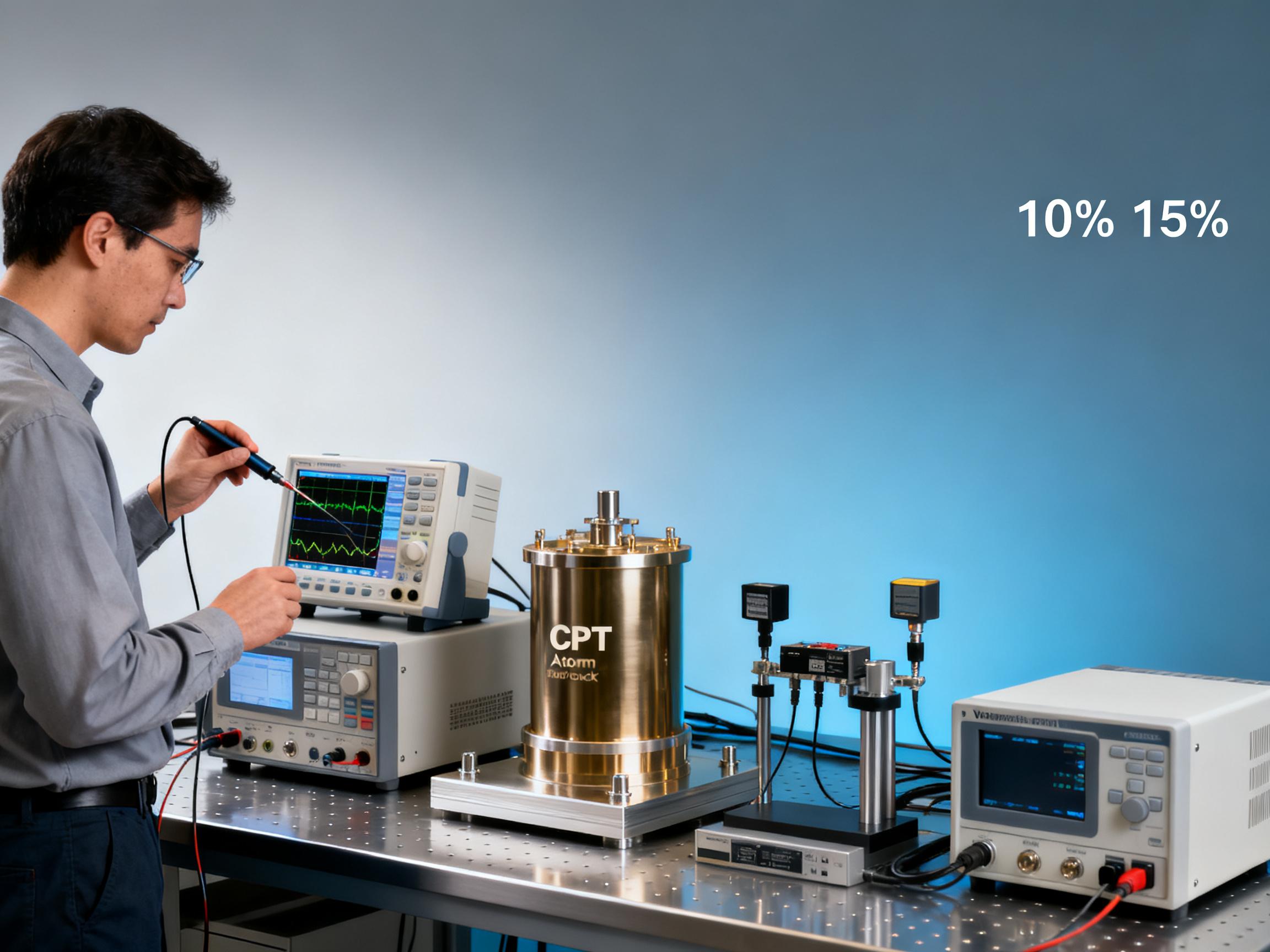RELATED
![How CPT Atomic Clocks Reduce OPEX in 5G Base Stations [Real Data] How CPT Atomic Clocks Reduce OPEX in 5G Base Stations [Real Data]](https://usimg.bjyyb.net/grey.png?x-oss-process=image/resize,m_fixed,w_800,h_600,limit_0) How CPT Atomic Clocks Reduce OPEX in 5G Base Stations [Real Data]2025-12-11
How CPT Atomic Clocks Reduce OPEX in 5G Base Stations [Real Data]2025-12-11 2024 CPT Atomic Clock vs Rubidium: Which Offers Better Stability for Telecom Networks?2025-12-08
2024 CPT Atomic Clock vs Rubidium: Which Offers Better Stability for Telecom Networks?2025-12-08 Live Demo Results: CPT Atomic Clock Performance Under Harsh Environmental Tests (Data Inside)2025-12-05
Live Demo Results: CPT Atomic Clock Performance Under Harsh Environmental Tests (Data Inside)2025-12-05 Budgeting for Precision: Total Cost of Ownership for a Rubidium Atomic Clock Over 5 Years2025-12-03
Budgeting for Precision: Total Cost of Ownership for a Rubidium Atomic Clock Over 5 Years2025-12-03
MESSAGE
At the beginning of this year, the UK Ministry of Defence stated that the UK's Defence Science and Technology Laboratory is developing the country's first quantum clock (an atomic clock realized by using quantum technology) to enhance military intelligence gathering and surveillance capabilities.
The shift of atomic clocks from the laboratory to the battlefield marks that time precision has become an important competitiveness in modern science and technology and national defense. From the precise guidance of missiles to the networking of satellites, from electronic countermeasures to unmanned combat, atomic clocks, with their ultimate precision of "less than one second of error in tens of millions of years", have become an important part of the technological competition among major powers.
How do atomic clocks "win with time"? And how does the competition around atomic clocks stir up waves in the world?
Grasping the Pulse of Time
People often use the word "instant" to describe how fleeting time is. Converting the ancient definition, one instant is approximately 0.018 seconds. There are about 12,000 "finger flicks", 240,000 "moments", and 4,800,000 "instants" in a day and night. This definition of time that surpasses perception and ability is the simple, primitive, and romantic imagination of the ancients about "time observation". At the same time, it has inspired human rational thinking and scientific exploration of time standards.
Historically, the time unit "second" was once defined as 1/86,400 of the time it takes for the Earth to rotate once (a solar day). With the development of science and technology, scientists found that the Earth's rotation is not stable, and solar days are not exactly the same throughout the year. So in 1956, based on the law of the Earth's revolution around the Sun, the International System of Units "second" was revised to 1/31,556,925.9747 of the time it takes for the Earth to revolve around the Sun once. This definition was approved at the 11th General Conference on Weights and Measures in 1960. However, the time measurement error caused by the instability of the Earth's rotation was not overcome by the Earth's revolution, and there were also problems with the difficulty of reproducing the Earth's revolution for measurement purposes.
To observe time more accurately, it is inseparable from the development of atomic physics and quantum mechanics.
An atom is the basic unit that makes up matter, and its structure can be divided into a nucleus and extranuclear electrons. The extranuclear electrons move around the nucleus and follow the laws of quantum mechanics, distributing in different electron orbits. Imagine that there are many different "steps" inside an atom, and electrons can jump between these steps. This kind of jump is called a quantum energy level transition. When a transition occurs, the electron jumps from one step to another, just like the pendulum in the macroscopic world, emitting a stable "tick-tock" sound and radiating electromagnetic waves with extremely stable frequencies.
Different kinds of atoms have unique oscillation frequencies. When atoms are under electromagnetic radiation of this frequency, the electrons orbiting inside the atoms will undergo quantum energy level transitions. Atomic clocks designed based on this quantum phenomenon can define time by measuring the electromagnetic waves emitted during energy level transitions.
In the late 1940s, the National Bureau of Standards of the United States successfully developed the ammonia molecular clock. In 1955, the National Physical Laboratory of the UK developed the world's first cesium atomic clock, marking that mankind officially entered the era of atomic clocks. Compared with traditional time measurement methods based on astronomical phenomena, atomic clocks will not change due to changes in geographical location or time, showing better consistency and stability.
In 1967, the 13th General Conference on Weights and Measures adopted atomic time to define the "second", that is, 9,192,631,770 times the period of the transition between two hyperfine energy levels of the ground state of the cesium-133 isotope under the condition of no external interference. Until now, the definition of the "second" is still maintained by the more advanced cesium atomic fountain clock.
Winning on the Modern Battlefield
Precise time measurement is the cornerstone for improving the modernization efficiency of weaponry and equipment. As a core support, atomic clocks have extremely high time measurement precision and can significantly improve the coordination, accuracy, and autonomy of weaponry and equipment, playing an important strategic role. Nowadays, atomic clocks have been widely used in equipment such as warships, aircraft, and missiles, becoming the indispensable "time heart" in the process of weaponry and equipment modernization.
- Navigation and Positioning and Precision Strikes. The navigation system of traditional ballistic missiles highly depends on inertial navigation and satellite positioning signals. In a war environment, satellite signals are easily subject to electronic interference, signal loss, or spoofing attacks, etc., which will affect the accuracy and stability of ballistic missiles. For example, the fastest intercontinental missiles can fly at a speed of 8,800 meters per second. When the GPS signal is interfered with, even with a deviation of only 0.3 seconds, its strike accuracy will deviate from the target by about 3 kilometers. The introduction of atomic clocks provides missiles with ultra-high-precision self-time synchronization capabilities, enabling missiles to achieve precise navigation and positioning even when the GPS is unavailable.
The GPS satellite navigation system of the United States adopts a combination of cesium atomic clocks and rubidium atomic clocks, with stable performance and high precision. Russia started with the GLONASS satellite navigation system in the 1980s. In the early stage, it was equipped with cesium atomic clocks, and now it has entered the era of hydrogen atomic clocks. The hydrogen atomic clocks on its GLONASS-K2 series satellites have a stability of 1×10⁻¹⁴ per day. The Galileo system of the European Union mainly uses rubidium atomic clocks and passive hydrogen atomic clocks, aiming for higher precision and reliability. The development of atomic clock technology has not only promoted the upgrading of satellite navigation systems in various countries but also provided a solid time benchmark for precision guidance, demonstrating the key supporting role of atomic clocks in the modern military application field.
- High-Precision Time Synchronization. On the eve of a major battle, in order to facilitate unified actions, soldiers would always synchronize their watches in advance to correct the time. In modern warfare, atomic clocks have replaced the time synchronization ceremony based on mechanical watches, allowing the gears of the war machine to operate without the slightest error in minutes and seconds. Especially in military communication data transmission, atomic clocks can provide ultra-high-precision time synchronization, greatly improving the reliability and security of military communication systems. The "MILSTAR" satellite communication system of the United States is equipped with high-precision atomic clocks, providing a reliable time benchmark for military communications.
With its outstanding high-precision time synchronization performance, atomic clocks have extended their applications in the military field to multiple aspects, covering multiple key fields such as electronic countermeasures, network security, and missile defense. In the field of electronic countermeasures, the high-precision time synchronization ability of atomic clocks can significantly improve the efficiency of interference and anti-interference; in the field of network security, atomic clocks can provide a more reliable time benchmark for encrypted communications; in the field of missile defense, atomic clocks can effectively improve the response speed and accuracy of the early warning system. Atomic clocks are gradually becoming an indispensable core component in modern weapon systems, providing crucial time support for various combat platforms.
- The miniaturization and portability of atomic clocks are expected to enter tactical applications. High-precision and transportable atomic clocks as well as miniaturized or even chip-scale atomic clock equipment can provide a reliable and stable time source, ensuring accurate timekeeping in various complex environments. Since the beginning of the 21st century, with the advent of chip-scale atomic clocks, the guidance accuracy of missiles has been greatly improved. The CPT atomic clock developed by the National Institute of Standards and Technology of the United States based on the principle of coherent population trapping of atoms is even smaller than a grain of rice and can be deployed on multiple platforms such as satellites, missiles, and warships, greatly improving the positioning accuracy of weapons. Nowadays, military atomic clocks are developing rapidly in the research directions of higher precision, smaller volume, and lower power consumption.
In 2022, the newly developed shipborne optical clock in the United States broke through key problems such as the sensitivity of high-precision optical clocks to overall size and complex marine environments and worked continuously for 20 days on naval vessels in the Pacific Ocean. Its performance is comparable to that of laboratory-level cesium atomic clocks, showing huge military application potential.
CONTACT US
Please use the form below to get in touch.
If you need a reply we will get in touch as soon as possible.

![How CPT Atomic Clocks Reduce OPEX in 5G Base Stations [Real Data] How CPT Atomic Clocks Reduce OPEX in 5G Base Stations [Real Data]](https://usimg.bjyyb.net/sites/91500/91958/1765179857856560163985903616.jpeg)



